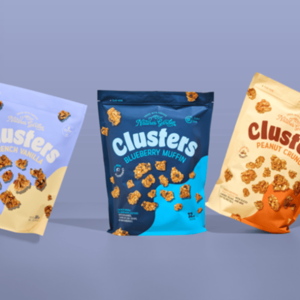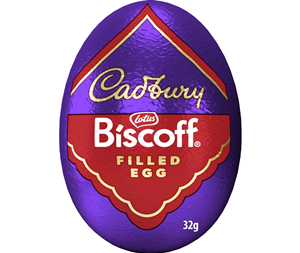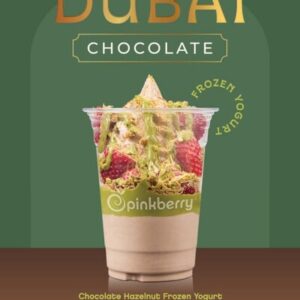Shelf appeal

In the first in a two-part series, Graham Godfrey, food and confectionery industry consultant, considers how satisfying the customer and the consumer is a fundamental step to success in any business.
The product you offer must portray an image of desirability, quality, trust, consistency, service and value. While there is reasonable and logical emphasis on satisfying and motivating the consumer, the customer (ie the person or organisation who sells your product to its final consumer) is arguably just as important, because if the product is not displayed and sold effectively – an activity largely out of the manufacturer’s hands – then it is unlikely to be successful. With a new business or product, identifying the right outlets and then developing your relationship with relevant distributors and retailers is of the utmost importance.
Desirability
A product has to be desirable and this parameter is slanted towards the ultimate consumer, although it does help if the seller likes and is enthusiastic about the product as well. Trade promotion is very important and effective in creating interest in your product and finding ways of motivating the retailer, particularly in the launch phase, is vital.
The word ‘desirable’ means different things to different people at different times, so a high degree of clarity is needed in aligning your product and its availability with the needs and wants of your target consumer and circumstances.
The category or sector into which the product fits is important – is it for example a gift, a refuel, a personal indulgence or something to share? There are many different uses for confectionery and you need to be clear what your product provides to the consumer because not only will this affect your approach to marketing the product, but it will also influence where, when and how it is sold.
Products for gifting between individuals need excellence and impact, and in some ways the presentation and packaging are as important as the product itself – although this must never disappoint. Innovative and exciting products that differ from the norm will prosper in this category. There are real opportunities here for innovation, niche products and premium pricing.
Gifting between a mother (or other close relative) and a child relies totally on trust. The product can be quite conventional but it must be consistent, pure, well labelled and utterly reliable if it is to be suitable in this scenario. Even the slightest deviation from perfection and expectation will ensure rapid discontent and disappointment with the product and that there is no repeat purchase. This is an important sector because it has a very strong ‘recruitment’ component – often the chocolate you taste first remains a favourite throughout life.
Refuel products are important for those who may not have the time or opportunity for a meal or proper break. They tend to be satisfying and high in energy (but this is not essential and may not be considered desirable in many cases) and they are often sold in impulse purchase outlets such as service stations, railway stations and newsagents.
The market for these products is dominated by long term conventional offerings from the major manufacturers, so there may be an opportunity for less conventional products that still satisfy the appetite but do so in a different, perhaps less calorific way. Enhancing alertness can be an important additional factor in this sector, which is not a component of most existing confectionery products, but is a very important aspect of the parallel drinks market.
Indulgence and sharing products tend to be fairly conventional (chiefly moulded bars and count lines), but there is always an opportunity for innovation.
Confectionery products specifically designed for occasions such as exercise and outdoor pursuits seem ordinary at present and genuine sports nutrition may well provide a new and exciting opportunity if products can build reputation and performance. Packaging design could be an important element in this niche sector to avoid problems with litter at outdoor and sensitive locations.
Part of building desirability is building a brand and you can now build a brand and an image even on a small and local scale thanks in part to the consumer access facilitated by social media. The opportunity exists to build desirability through positioning and appealing directly to a target consumer group.
Quality
There really is no room in the confectionery market for anything other than high quality products, and clear and obvious quality is absolutely essential for any new product trying to enter the market.
This basic rule applies to the whole range of products across all categories; even economy products must have a quality feel and image.
The relentless increase in consumer demand for quality has been a prominent issue in the late 20th and 21st centuries. Poor quality products and ranges previously marketed at the economy end of the scale have either been driven to improve quality or have been eliminated.
The approach and activities of the major retailers with their own brands has been significant in this instance as they have driven the expectation for quality at low cost. The consumer now demands ever-increasing quality of product, presentation and service.
Consumers are not only faced with a wide range of products to choose from but they are very conscious of the pressure on disposable income and therefore will seek out products that appear to have, and deliver, quality in terms of ingredients, packaging, image and of course flavour, eating qualities and appearance. It is also often forgotten that people want to be proud of their purchases, so make your product something to be proud of in every respect.
The initial impression of the product, the way it is presented on the shelf, its name and the way in which the product and its characteristics are described on the pack must all attract and interest the consumer and motivate purchase. That impression must then be re-enforced at every subsequent stage; the way the pack opens, the appearance and smell of the product, its taste, texture, aftertaste and the satisfaction the eating experience delivers, must all make the consumer satisfied and motivated to want to come back and buy another.
A strange thought perhaps, but maybe a key characteristic of a product is to make the consumer want to buy another one – think about it, what is it about your product that will make the consumer want to repeat the purchase?
Packaging
The way in which a product is packaged fulfils a number of important elements for the manufacturer, customer and consumer.
For the consumer it is the first point of eye contact so it must have impact and transmit the messages required to encourage purchase. It must define the product, so that the consumer is sure of the nature of the product and it must provide protection while allowing easy access.
For the customer – the retailer – packaging (including cartoning as well as primary wrapping) must provide protection so that the product is not damaged or made unsaleable in storage or while on display and has a good shelf life. For smaller retailers, cartoning, which gives a display impact, is potentially important as it greatly simplifies and improves it.
For the manufacturer, the primary functional purpose of wrapping is to provide both direct protection for the product (such as moisture and odour barriers) and mechanical protection in the supply chain and hence to deliver shelf life to the retailer and quality to the consumer.






